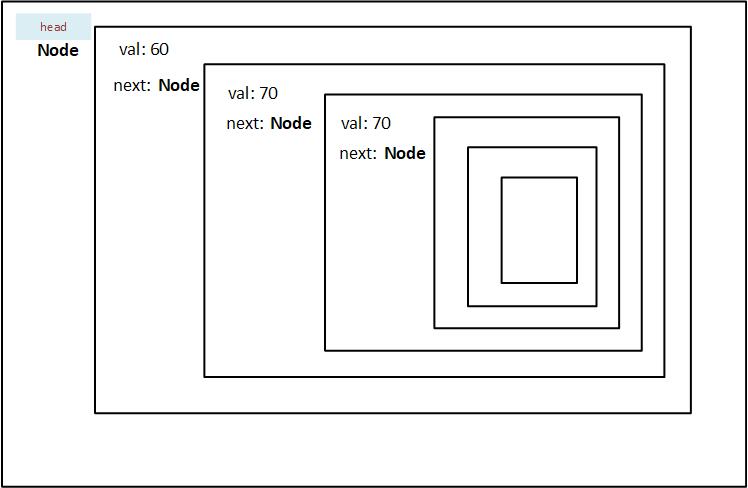Building a Node
As we saw in the introduction, a linked list is made up of nodes that are linked to each other, meaning one node points to the next. A node consists of data and a pointer to the next node. This is what we will create first.
How to create a Node
We'll create a struct that holds data and next Node pointer first:
#![allow(unused)] fn main() { struct Node { val: i32, next: Node, } }
Note on struct: We could have used an enum instead of a struct, but for our initial example, a struct is simpler to understand. In practice, Rust linked lists often use enums to represent the possibility of an empty node or the end of the list, but here we start with a struct for clarity.1
After running the preceding codeblock you'll get an error saying Node has infinite size. What does that mean exactly?
Here, you are technically saving the value of Node inside itself, not the address. This means that node will contain its value, and the next node. The next node will contain the value, and the node after it.

Figure 7.2.1.1: The recursive nature of a Node that is stored in a stack
As you can see from the diagram, the head node has to store all the nodes (n - 1) in it. And since we do not actually know how many nodes there are in a particular linked list, rust won't be able to assign the storage at compile time. Therefore the error presented for Node describes it as having infinite size.
How to store the address of next node
To overcome the problem of infinite size, we'll have to store the address of the next Node, which can be allocated at runtime. To do that, we'll use the Box<> smart pointer.
#![allow(unused)] fn main() { struct Node { val: i32, next: Box<Node>, } }
Once we use a pointer, there will be no errors. We have successfully created our linked list node.
Let's initialize it:
let node = Node {
val: 60,
next: Box::new(Node{
val: 70,
next: Box::new(Node{
val: 80,
next:???
})
})
};If we try and initialze it, we'll quickly realize that there is not stop to it. By that I mean, we will always have to assign a Node to next value. This is not feasible. We need to have the option to stop.
This is where Option comes in. Since next: Box<Node>, but we want it to end, we'll need to convert the type of next to Option.
#![allow(unused)] fn main() { struct Node { val: i32, next: Option<Box<Node>>, } }
There we go! Did I mention making a linked list in rust is going to be compilcated? That's why we're doing it!
Anyway, let's initialize it again:
#![allow(unused)] fn main() { let node = Node { val: 60, next: Some(Box::new(Node { val: 70, next: Some(Box::new(Node { val: 80, next: None, })), })), }; }
The codeblock above looks an awful lot like our diagram, but the difference is, that next actually stores an address in heap.